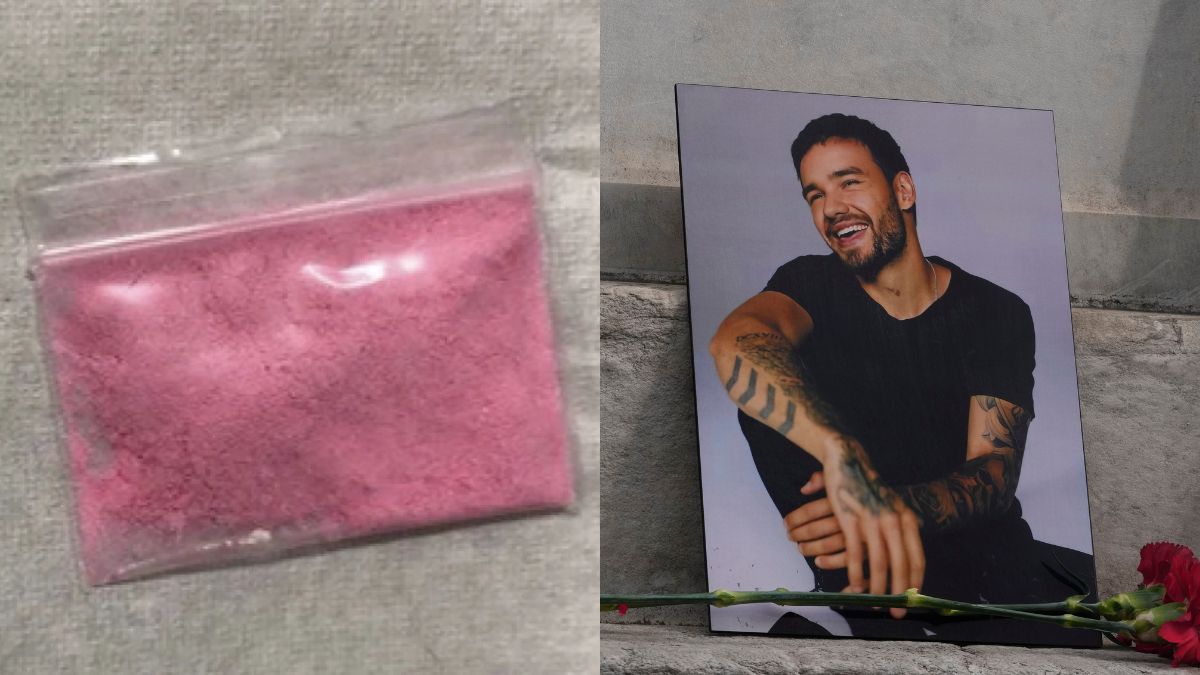Pink cocaine, a recreational drug, has gained attention and left people confused as it rarely contains cocaine despite its name. Recently, media reports claimed that former One Direction pop star Liam Payne had the drug cocktail in his system when he fell to his death, raising concerns about the dangers it poses to users.
The drug, which is actually a mixture of various substances dyed pink, has been appearing in drug seizures, directing law enforcement to issue warnings.
What is pink cocaine?
Also known as “tusi,” pink cocaine rarely contains cocaine, typically containing ketamine, a drug with entirely different effects. The mixture, coloured with food dye and sometimes flavoured with strawberry, usually contains at least one stimulant and one depressant.
Commonly found substances include methamphetamine, ketamine (a dissociative anaesthetic with hallucinogenic effects), MDMA (ecstasy), as well as benzodiazepines, crack cocaine, and caffeine.
Pink cocaine is typically taken in pill form or snorted as a powder, though it is rarely injected. It is mostly used in the club scene.
Why is it pink in colour?
Joseph Palamar, a researcher on drug trends at NYU Langone Health, said that the drug’s pink colour comes from food dye. He said, “Sometimes it has cocaine in the mix, but it’s typically more of a ketamine concoction.” Palamar added that it can be easily created by anyone with access to a few drugs and pink dye.
The name “tusi” may have been coined to mimic 2C-B, a drug popular on the rave scene in the 1990s, known for its euphoric effects, as per a paper published by Palamar in 2023. However, drug analyses reviewed by him reveal that pink cocaine typically does not contain 2C-B.
Palamar stated that many young people today are unaware of the name’s origins, which adds to the confusion. “It’s just some pretty powder that their friends are using. They probably have no idea what it’s supposed to be,” he said.
What are the effects of pink cocaine?
Pink cocaine is used in clubs for its euphoric and sensory-enhancing effects. According to UK Addiction Treatment Centres, the drug can cause hallucinations. Their website states that “Pink cocaine also has hallucinogenic properties, unlike the purely stimulant effects of traditional cocaine. Users report both euphoric and psychedelic experiences, including altered sensory perception and mood swings.”
Compared to other stimulants such as methamphetamine or synthetic drugs like ecstasy (MDMA), pink cocaine has a combination of stimulant and hallucinogenic effects. However, it is an easy drug to overdose on, with long-term use potentially causing heart attacks, high blood pressure, stroke, behavioural changes, addiction, anxiety, depression, and psychosis.
Why is it dangerous?
The danger of pink cocaine lies in the uncertainty of its composition. Users may experience unexpected effects or take more than they can handle based on past experiences. Ketamine, a key component, is a powerful anaesthetic used in surgeries but has gained popularity as a recreational drug and treatment for depression and anxiety. It can cause hallucinations and affect breathing and heart function.
Palamar warned, “Ketamine is not a fun drug to most people. It kind of puts you in your own little world, and things tend to feel very alien, especially in large doses.” He said that people who think they are taking cocaine to counter alcohol’s effects may experience unpleasant surprises with pink cocaine, which is often mostly ketamine.
“If you’ve been drinking, it’s going to make you sick to your stomach, and the dissociative effects are not going to be very pleasant,” he added.
Why is it in the news?
According to media reports, former One Direction singer Liam Payne had pink cocaine in his system when he fell from a hotel balcony in Argentina last week. According to ABC News and TMZ, the drug was found during a partial autopsy, citing anonymous sources familiar with the preliminary tests.
The 31-year-old pop star died after falling from a third-floor hotel room in Buenos Aires. An “improvised aluminium pipe to ingest drugs” was also found in the room, according to ABC.
Post-mortem results indicated that Payne was alone at the time of his fall and “was going through an episode of substance abuse.” Prosecutors had earlier stated that substances resembling narcotics and alcohol had been found in the room, alongside broken furniture and other objects.
Where is pink cocaine coming from?
Pink cocaine first appeared on the streets of Colombia around 2010 and has since spread throughout the Latin American club scene, including in Argentina, Venezuela, Uruguay, Chile, and Panama, according to Vice. It has also become popular among club-goers in the US and Europe, particularly in Spain.
The United Nations 2022 drug report revealed that pink cocaine has also been found in the UK, Austria, Switzerland, Canada, and Southeast Asia.
In May, the US Coast Guard seized pink cocaine along with other drugs off the coasts of Mexico and Central and South America. Palamar noted, “That was the first time that I heard of large batches being imported into the US as tusi.” He added that it could just as easily be mixed by drug dealers within the United States.
With inputs from AP
)